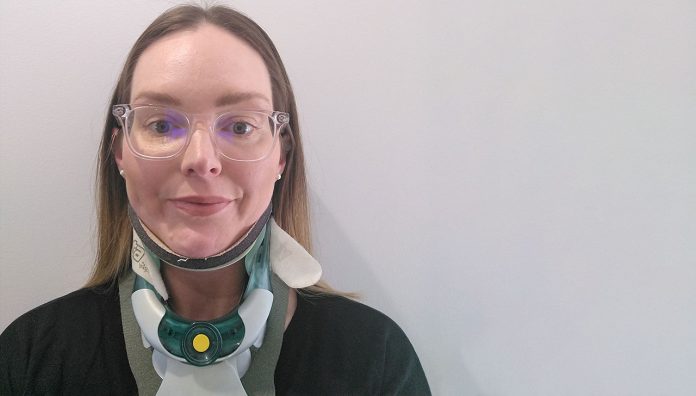The journey through the Australian healthcare system has been long and hard for this pharmacist patient.
I am one of the millions missing. One of the millions of people living with a rare disease for whom getting a correct diagnosis can take decades. We are a tribe of forgotten folks, who along the way are likely, at least once, to hear the comment: ‘It’s all in your head’.
I am a registered pharmacist. Yet I cannot perform my role due to chronic and debilitating illness. At 32, I was diagnosed by a clinical geneticist with Hypermobile Ehlers-Danlos syndrome (hEDS) a connective tissue disorder (CTD).
Chronic pain, extreme fatigue and neurological symptoms from brainstem compression resulted in my early departure from a career in pharmacy.
My first symptoms were a dislocation at 4 years of age. This should have been a red flag and led to some work-up by doctors. But of course, it did not.
Adolescence was full of migraines, orthostatic intolerance, generalised global body-wide aches and pain, soft tissue injury, chronic constipation and Raynaud’s phenomenon. But not one GP or specialist I consulted came remotely close to connecting the dots on these seemingly unrelated issues.
‘If you can’t connect the issues, think connective tissues.’ This is a phrase I would like all clinicians to know. I want it taught in medical, nursing, pharmacy and allied health faculties of learning. I strongly believe there are systemic failings that serve to delay or incorrectly diagnose patients with rare diseases, chronic illnesses and/or syndromes.
The biggest failing is that students are currently taught to look for horses, not zebras. This is a mistake and leads to delays such as mine. Recent research suggests that hEDS is not so rare after all. It has, perhaps, a prevalence of close to 1 in 500 – not 1 in 2,500 as previously determined.1,2 This misnomer, that zebras are rare, directly leads to many patient diagnoses being completely missed, while others are never able to shake the misdiagnoses they have been given.
My journey to diagnosis was filled with the likes of these phrases. ‘You’ve just got an achy body type… Hypermobility is benign… You just need to strengthen… A psychologist will help you.’ All the while my own research was telling me otherwise.
These dismissive statements play heavily on patients’ minds, undermining what they know to be true – that they are very ill.
Achieving my final and correct diagnosis from a clinical geneticist was extremely validating. But the path to get to this point was one of fighting the system, one that I had to drive from beginning to end. Misdiagnoses received along the way were fibromyalgia and myalgic encephalomyelitis, better known and stigmatised by the outdated term “chronic fatigue syndrome”.
While I now have a correct overarching diagnosis of CTD, my path to treatment continues. A lack of interest from clinicians who focus on CTDs and their comorbid conditions means I need to consult neurosurgeons in the United States.
I hope to change this is in future by engaging and educating clinicians from appropriate specialisations and via the establishment of a National Connective Tissue Disorder charity.
|
Hypermobile Ehlers-Danlos Syndrome is a heritable connective tissue disorder for which there is currently no genetic marker identified so diagnosis remains clinical. A range of conditions including debilitating fatigue may also be present with loose, painful and unstable joints that can dislocate easily and frequently. In Ms Linke’s case it has led to basilar invagination which has caused compression of her brainstem. She now needs to wear a neck brace. Janna Linke was recently re-registered on the APHRA pandemic sub-register to assist with the spread of COVID-19. She remains unable to work. |
References
- Demmler JC, Atkinson MD, Reinhold EJ, et al. Diagnosed prevalence of Ehlers-Danlos syndrome and hypermobility spectrum disorder in Wales, UK: a national electronic cohort study and case – control comparison. BMJ Open 2019;9:1–9. At: https://bmjopen.bmj.com/content/9/11/e031365
- The Ehlers-Danlos Society. What are the Ehlers-Danlos syndromes? 2020. At: www.ehlers-danlos.com/what-is-eds/






 ‘We’re increasingly seeing incidents where alert fatigue has been identified as a contributing factor. It’s not that there wasn’t an alert in place, but that it was lost among the other alerts the clinician saw,’ Prof Baysari says.
‘We’re increasingly seeing incidents where alert fatigue has been identified as a contributing factor. It’s not that there wasn’t an alert in place, but that it was lost among the other alerts the clinician saw,’ Prof Baysari says.








